Recently I was asked for my best tips for operating session success. In turn, I asked numerous groups of operators, including participants at ProRail (an operating event held in Kansas City) and layout owners and operators throughout the Midwest. The query elicited a variety of responses, with several recurring themes. Here are the top five answers. Notice that completed scenery or great refreshments are not among the requirements, though these certainly can enhance the experience. See if you agree with these tips for operating session success.
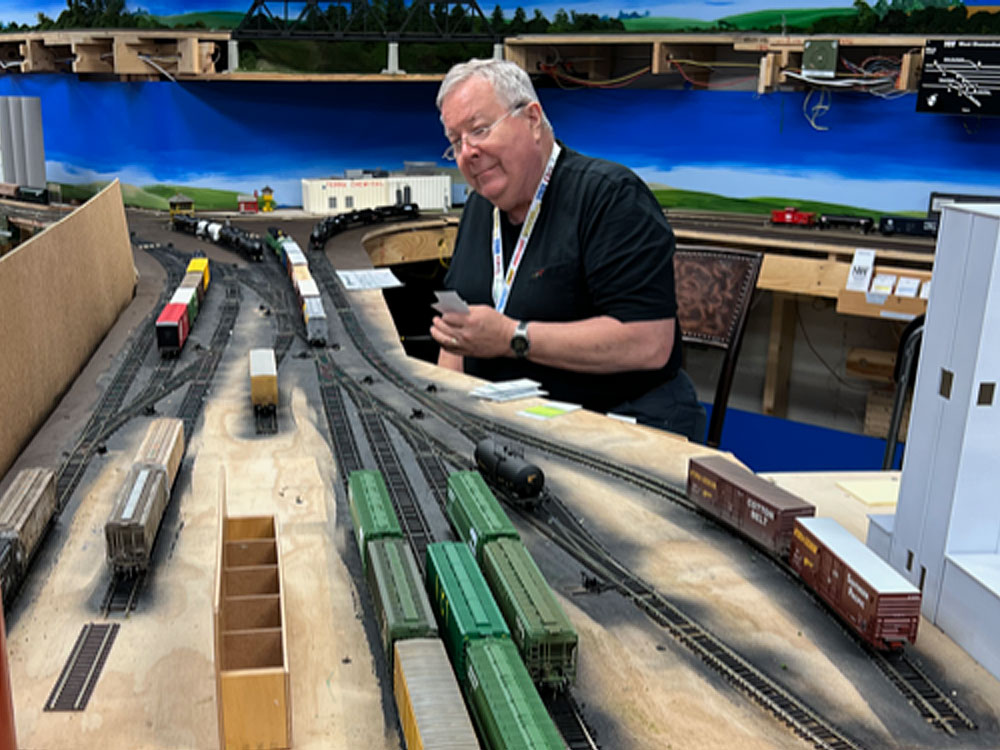
Reliable track and equipment
No operating session can be successful if the turnouts, electrical systems, engines, and cars do not perform as intended without on-the-fly maintenance or untimely delays due to malfunctions. This element made the top of everyone’s list. Note the term “reliable,” not “perfect,” as the expectation. Those who have hosted operating sessions on their own layouts were quick to point out that a session could have an occasional glitch and still be successful. But the consensus was that if the layout doesn’t perform reliably, it’s not fun. It doesn’t matter how great the scenery looks or how fancy the structures are; the trains need to run smoothly. Most of us have been there, operating on a layout that looked impressive, but performed unreliably, yielding an experience to forget, not treasure.
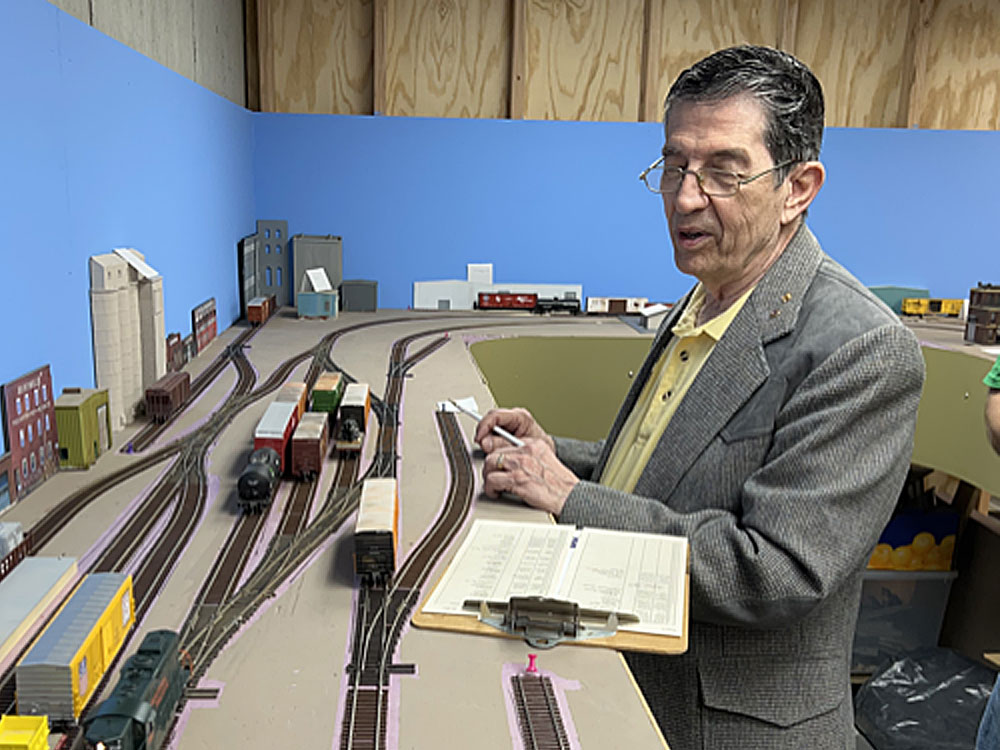
Clear paperwork
The instructions for the operators should be easily understood, without the necessity of asking the superintendent for clarification. This includes clear schematics and diagrams as well as car and train routing instructions. Much of the fun and challenge of operations is analyzing and developing solutions to switching puzzles and/or fitting trains into the flow of a miniature transportation system within the timetable or sequence of events. Crews want to know the expectations so they can do their jobs.
![Two men operate trains on an HO scale model railroad]](https://www.trains.com/wp-content/uploads/2024/03/MRL0324-03-Jared-Childers-and-Eric-Mumford-work-Joe-Kaspers-BN-layout.jpg)
Realism and authenticity
The layout’s theme should fit the era and geographic area modeled. For example, you shouldn’t see steam power pulling a stack train, or four-axle switchers from a West Coast hauler pulling a unit grain train through the Appalachian Mountains. That’s neither realistic nor plausible. It’s also good if the layout has some unique feature that makes it stand out, such as a major industry, landmark station, signature geographic feature, or the like.
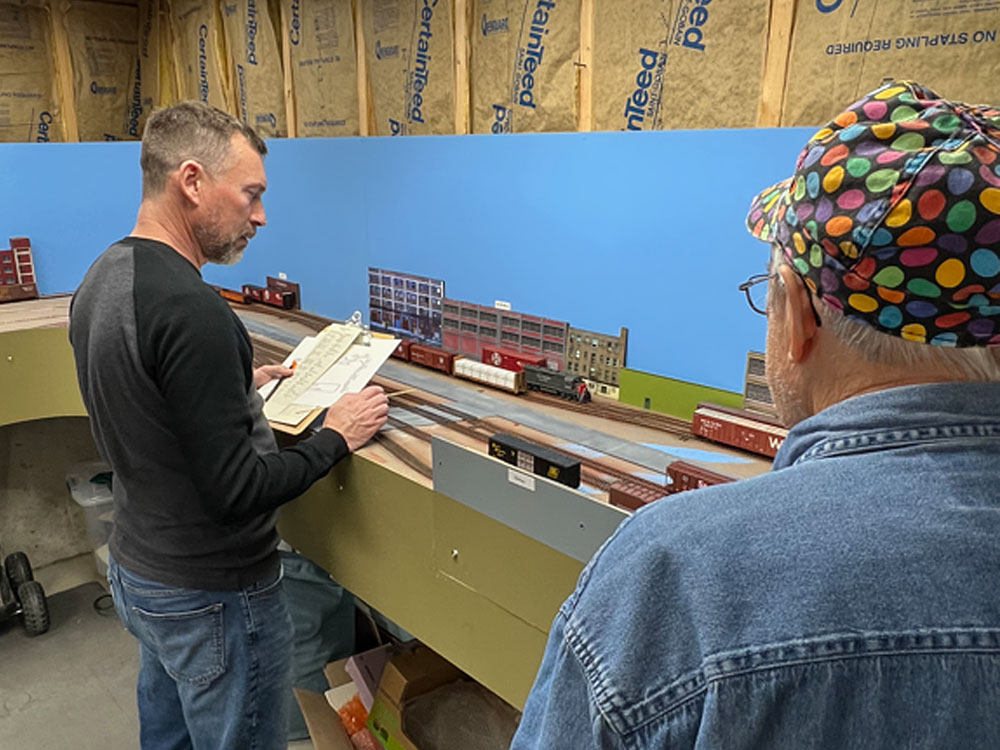
Simplicity with challenge
It could be argued there’s a fine line between a layout or operating job that’s too simple vs. one that’s too challenging. Usually operators are quick to offer “next time I do this job I’ll be more efficient,” which is natural. Everyone makes beginners’ errors resulting from lack of familiarity with the job. But the layout must not be so difficult to understand or navigate that a beginner becomes discouraged. The model railroad must offer a variety of jobs with differing levels of difficulty to challenge operators at different levels of experience and skill.
And a challenging layout doesn’t necessarily require a large footprint. Operators agreed that a big railroad isn’t a prerequisite for entertaining a crew for several hours. My good friend Chuck Hitchcock shared with me that some of his most enjoyable times were operating on small layouts. On a large layout, everyone gathers for their assignments at the beginning of the session, but then might disappear to do their work until the exit briefing. There’s often a certain intimacy and camaraderie on a small layout that you don’t get on a big one.
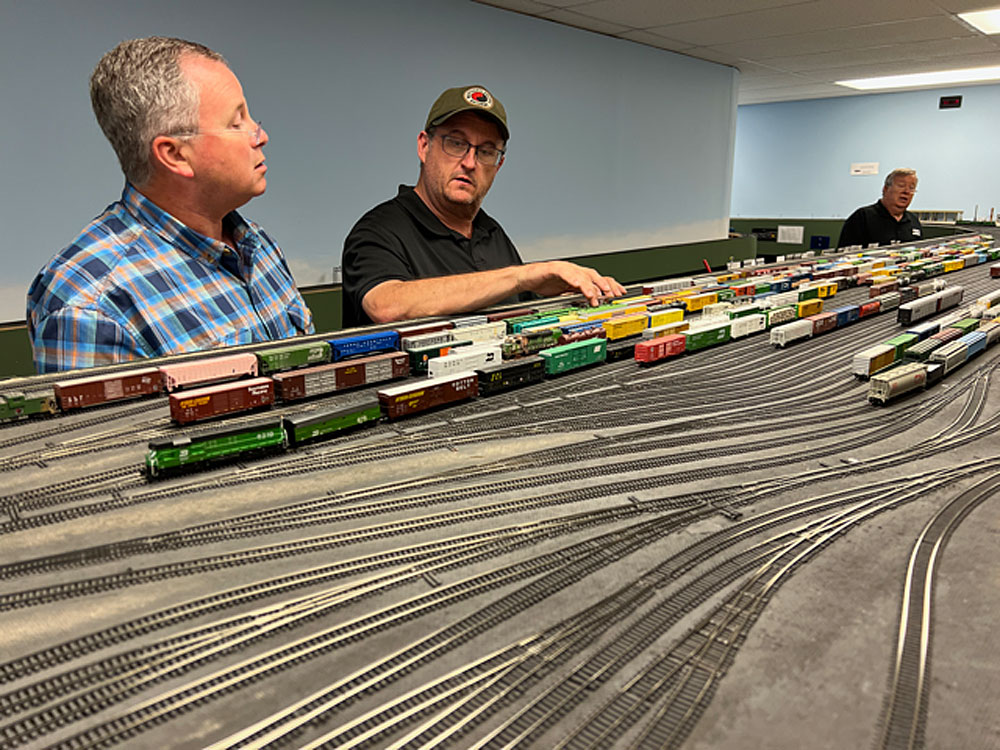
Relaxed, comfortable atmosphere
I’m not referring to the barometric pressure, but rather the logistics and the tone of the operating session, set by the superintendent. Objectively, the layout is clean, with adequate aisle space, good lighting, and either carpeted flooring or anti-fatigue mats (being on one’s feet for 3 hours can be wearying). Subjectively, the superintendent displays a level of trust in the crew and supports them based on their skill level. This does not mean the superintendent looking over the operators’ shoulders or barking at them if they make a mistake or don’t follow the superintendent’s preferred way of getting the job done. (Nobody would enjoy that, least of all operators who might have paid thousands of dollars to travel and lodge for a weekend just for the opportunity to play with trains.)
Part of the enjoyment of operating a layout derives from sharing the hobby with like-minded hobbyists who enjoy each other’s company. As superintendent of my layout, oftentimes I’ll adjourn to the adjacent crew lounge, a short hallway away, and enjoy listening to the banter among the crews. This tells me they’re having a good time.
When an operator mentally checks all five of the above boxes, the superintendent/host can rest assured they’ve provided their crew with the elements for a great operating session. Have you experienced or provided one lately?
Read about Steve Otte’s first operating session.






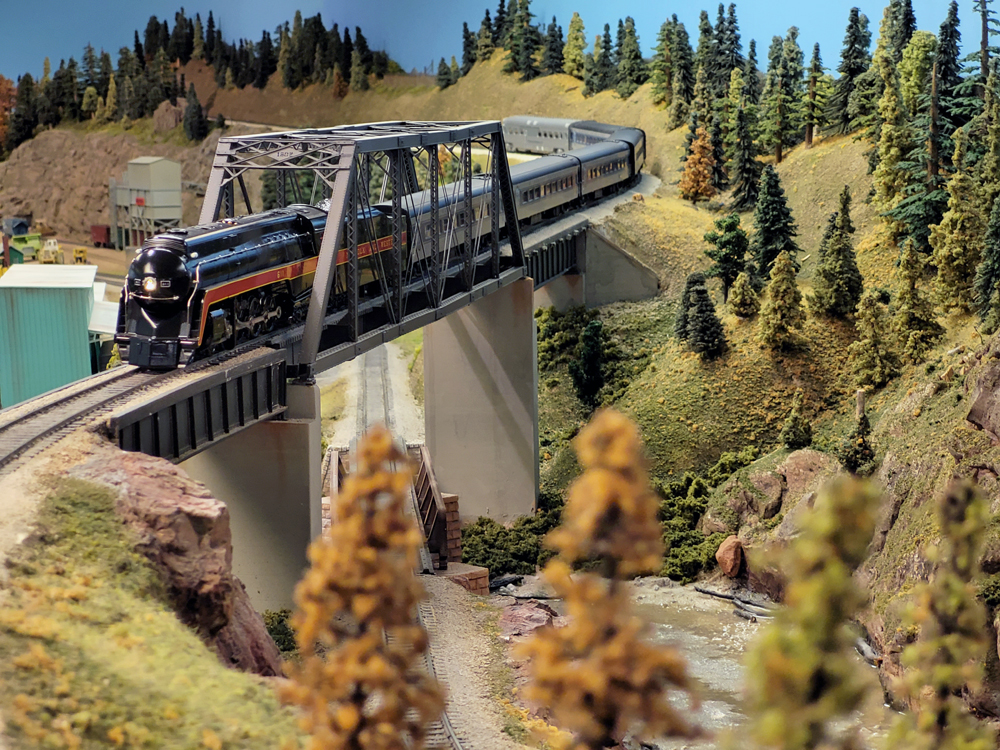
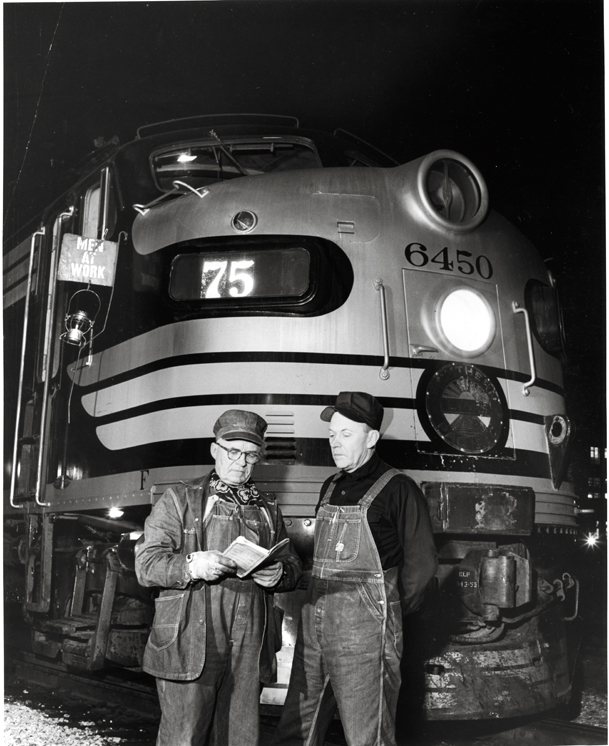
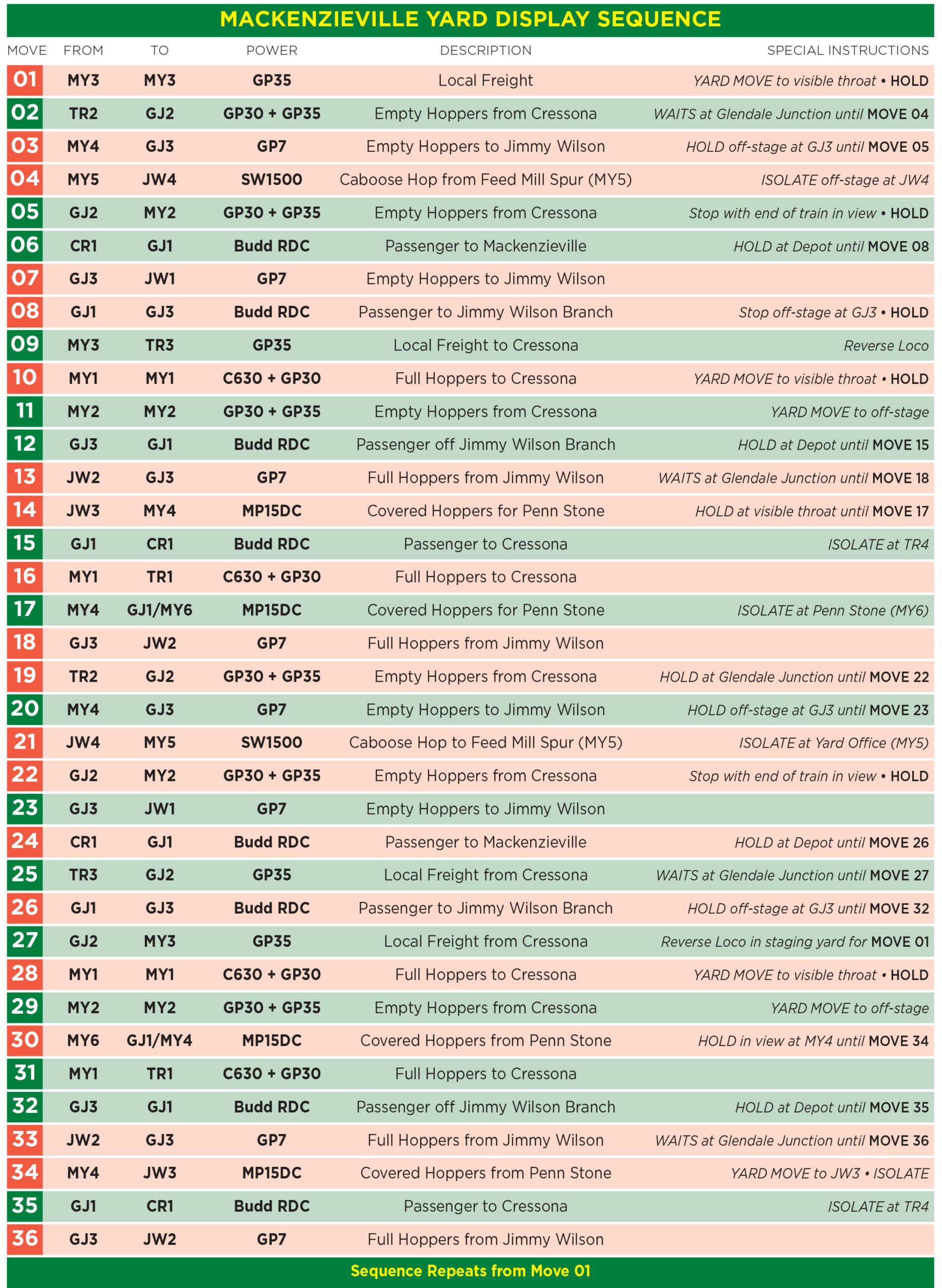
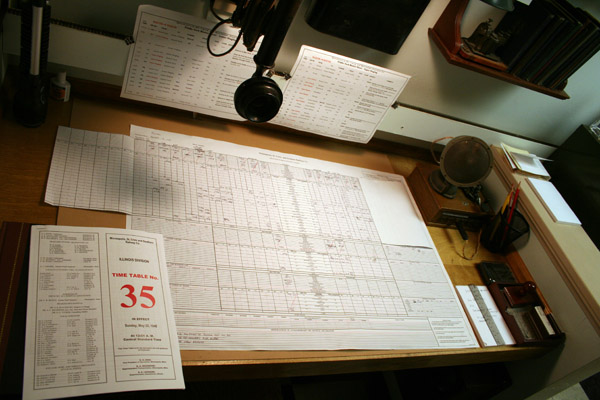




I belong to a club that has a 2 deck layout connected with one helix and a wye for continuous running during open houses. When we have operating sessions, we’ve only run on one of the two levels, alternating for each session. If there are more operators signed up, both levels will be in use. The train master will try to have 2 person crews, one engineer and the other member holds the paperwork and operates switches. That works very well because, when one gets stumped as to how to do a run around when switching cars, two heads are usually better than one! The club runs on DCC and there is a full signal system that every operator has to pay attention to while running their train. There’s a small refrigerator filled with drinks in the staging room and cookies are available too for snacking. The club was fortunate to obtain about a dozen SP club car seats that have been reupholstered and those can be very comfortable to relax in after your tasks are complete.
The train master has a 3 deck home layout that operates in a point to point configuration with two helixes. The sessions are set up using JRMI so every team gets a clipboard with the assignments, a pencil and uncoupling device to use just like when we all operate at the club. When members operate there, there’s always pizza and drinks available before going into the train room to start the session. There’s also a small frig and snacks available if someone needs a quick fix. His sessions always have the option for someone to run a through train on the main so other crews need to be aware of not using the main too much doing their assigned operations. The train master is always walking around answering questions or giving advice to operators. It always makes for a fun day.
Please correct my name: I am Eric Mumper
Curious fact. Every one of the layouts pictured was a “Plywood Central” with no scenery yet and in some cases, the owner didn’t even paint the bare plywood with a dirt or ground color. Now scenery is, of course, not a necessity for satisfying ops, but I think a little paint and maybe a track or two ballasted will present a layout with a more engaging environment with very little effort.
Excellent article and information. I would ask the author and Model Railroader staff to create a similar article focused on those who also enjoy the hobby to its fullest in every aspect, but rather whose interests are more focused on running trains and organizing consists however they wish. After all, it’s their model railroad and they should also be able to enjoy our hobby as they choose without criticism. We’re all in this hobby for one fundamental reason, enjoyment, fun, learning, and engaging with fellow model railroaders.